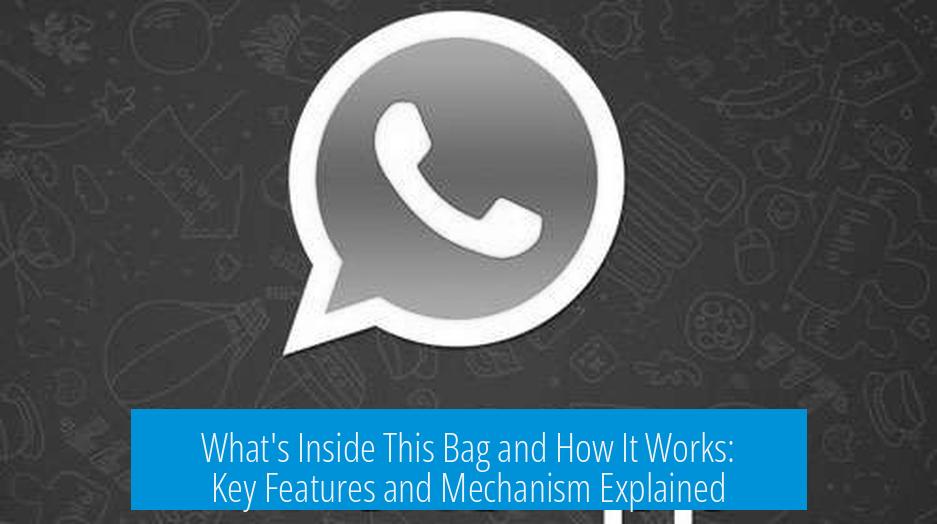What’s Inside This Bag and How Does It Work?

This bag contains a super saturated sodium acetate solution that crystallizes upon activation, releasing heat in an exothermic process. Pressing a metal plate initiates crystallization, transforming the liquid into solid crystals and warming the bag. The pack can be reset by heating to dissolve the crystals back into solution, making it reusable.
Contents of the Bag
Chemical Composition
The bag is filled with a super saturated sodium acetate solution. Sodium acetate is an organic salt formed by combining baking soda (sodium bicarbonate) and vinegar (acetic acid). This reaction produces sodium acetate dissolved in water at a concentration higher than normally possible at the solution’s temperature.
The solution inside the bag is extremely pure and concentrated, allowing it to remain liquid below its melting point without crystallizing, a phenomenon known as supercooling or supersaturation.
Physical State and Concentration
The sodium acetate solution is highly viscous due to its saturation. It is heated until it melts, then cooled carefully so it does not crystallize automatically. This results in a clear liquid held in a metastable state, ready for crystallization when triggered.
How It Works: The Mechanism of Action
Crystallization Process
- Pressing the small metal disc inside the bag disturbs the solution and provides nucleation sites where crystals can form.
- Initial sodium acetate crystals grow rapidly in a chain reaction, converting the liquid into a solid crystalline form.
- The click or flex releases tiny microscopic imperfections that prompt crystal growth, analogous to scratching glass to start crystallization.
- Crystallization spreads quickly due to the autocatalytic nature of the process.
Exothermic Reaction and Heat Release
While crystallization is a physical change, it is exothermic, meaning it releases energy as heat. This energy is the warmth felt during the process. As sodium acetate molecules arrange into a solid crystalline lattice, latent heat is given off, raising the temperature of the bag.
The reaction is not a chemical transformation but a phase change—from supercooled liquid to solid—which releases the stored energy.
Supersaturation and Nucleation Theory
The solution is supersaturated, meaning more solute is dissolved than should be stable. This state persists due to the lack of nucleation centers needed for crystals to form spontaneously.
Crystal formation requires nuclei exceeding a critical size. Smaller nuclei dissolve again because it costs more energy to form their surfaces than is released by crystallization. Once a nucleus is large enough, rapid crystal growth occurs. This explains why disturbance (pressing the metal plate) triggers crystallization.
Slight undercooling below the melting point is necessary for the reaction. Surfaces, dust, or flow disturbance also help initiate nucleation. The process balances energy needed to make new crystal surfaces with energy released by forming solid structure.
Reusability and Resetting the Pack
- After crystallization and heat release, the solid crystals remain inside the bag.
- Heating the bag in hot water or boiling dissolves these crystals, returning the solution to the supersaturated liquid state.
- The bag can then be cooled and reused repeatedly for heat generation.
- This makes it an eco-friendly reusable heating source, unlike disposable warmers.
Additional Notes and Context
Practical User Experience
The bags provide instant warmth when activated. The phase change happens quickly and is visually striking as the liquid instantly crystallizes.
Though designed to be reusable, some commercial products are labeled disposable, likely to encourage repurchase. Users who understand the chemistry reset them easily by boiling.
These packs are popular in cold climates and are often sold commercially as hand or foot warmers.
Scientific and Educational References
Several educational videos explain the science behind these heat packs, covering supersaturation, nucleation, and crystallization kinetics. These resources provide detailed demonstrations of the crystallization and its exothermic nature.
Key Takeaways
- The bag contains a super saturated sodium acetate solution that remains liquid below its melting point.
- Pressing the metal plate triggers crystallization by providing nucleation sites.
- Crystallization releases heat as the sodium acetate transitions from liquid to solid.
- The bag can be reset by heating to dissolve the crystals, allowing multiple uses.
- The process hinges on nucleation theory, surface energy balance, and supersaturation chemistry.
- User-friendly and reusable, these heat packs combine simple chemistry with practical heating applications.
What is inside the bag that makes it heat up?
The bag holds a supersaturated sodium acetate solution. This means more sodium acetate is dissolved in the liquid than usual at that temperature. It stays liquid until triggered to crystallize.
How does pressing the metal plate start the heating process?
Pressing the metal plate disturbs the solution and triggers sodium acetate crystals to form. This nucleation causes a chain reaction leading to rapid crystallization and heat release.
Why does the crystallization of sodium acetate produce heat?
When sodium acetate crystallizes, it releases energy in the form of heat. The process changes the solution from liquid to solid and is exothermic, so you feel warmth.
Can the heating bag be used again after it cools down?
Yes, you can reset the bag by heating it in hot water or boiling it. This melts the crystals back into the liquid, restoring the supersaturated solution for reuse.
What scientific principles explain how the bag works?
The bag’s function relies on supersaturation, nucleation, and crystallization energy. A small disturbance lets crystals grow, releasing heat. Surface energy and undercooling govern when crystals form.
Is the metal plate the only way to trigger the reaction?
No, vigorous massaging can also start crystallization by creating disturbances. The metal plate ensures a reliable trigger by producing shockwaves that form crystal sites.





Leave a Comment